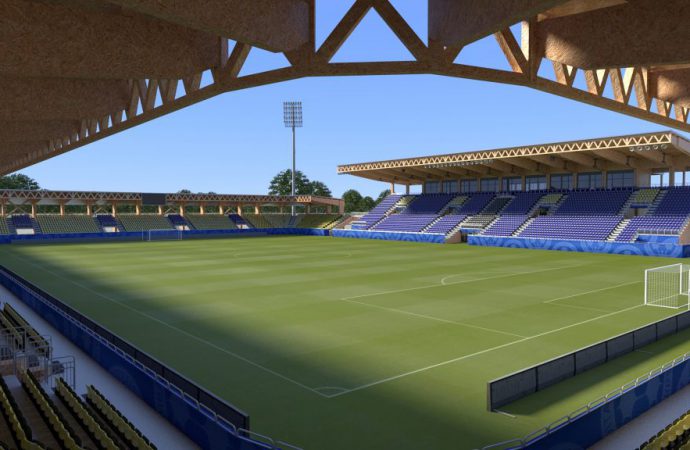Italian studio Bear Stadiums presents concept as cost-effective, eco-friendly alternative to cement
Glulam, a material of glue-laminated timber, has been put forward as the future of green sports infrastructure by Italian sports architect Bear Stadiums.
Together with Rubner Holzbau, the manufacturer of the technology, the studio is attempting to move sports venues away from away from cement and tubular metal that either impact the environment negatively or create a poor fan experience.
Talking to The Sustainability Report, Bear Stadiums founder, Jaime Manca di Villahermosa, said that the environmental costs, energy consumption, financial cost and long time-span for building is making sports clubs “think twice” about using cement when planning a new facility.
The other alternative, tubular metal, has been outlawed by European football governing body UEFA for European competition and offers “no insulated indoor space or waterproofing”.
Timber, therefore, is the rapid, cost-effective and sustainable option for clubs and federation to explore, said Manca di Villahermosa.

“The timber used in the Rubner production plans comes from certified sustainably managed forests, in the north of Europe,” he explained. “In these forests, the trees that are felled are replaced with a 2% increase. This is a guarantee that there is no loss in the tree-covered areas.
“The continued and harmonious life of the forest means that it keeps on absorbing carbon dioxide from the atmosphere, while providing premium building material. It also means that the forests are monitored and healthy, wildlife is safeguarded and watersheds are protected.”
Stadiums built solely from the timber can hold up to 20,000 spectators and can be built in permanent and temporary form. Manca di Villahermosa said they are built to both FIFA and UEFA standards.
To add to the sustainability credentials of the stadiums, mini wind turbines and be integrated into the structures to create a “hybrid energy package” on the roofs to “absorb the energy demands of the stadium” and “significantly reduce management costs”.

“Smart systems for heating, cooling, water management and electric works throughout the stadium are also in place to reduce energy consumption,” he added.
Although the company has no example of an existing project like this, a timber structure being designed by Zaha Hadid Architects for English League Two football club Forest Green Rovers has demonstrated the material as a viable and environmentally-friendly alternative for other clubs.
Bear Stadiums has previously worked with Italian Serie A football team Cagliari Calcio to design its temporary stadium as it waits to move into its new permanent home, and the fully steel 16,000-capacity permanent home of Serie B club Frosinone Calcio.
Jaime Manca di Villahermosa on Glulam:
“Glulam is an engineered structural material consisting of a number of graded, kiln-dried and selected full length laminations – usually 45 mm thick – bonded with proven adhesives, to form a solid member of practically any length, shape or size.

“The main reason for laminating is to produce larger size elements than possible in solid sawn timber. There is also an increase in strength. The strength of a single piece of timber is as strong as its weakest point, which is usually the largest knot.
“In laminating, the weakest point of one piece of timber is bonded to the higher strength of adjoining pieces, thus forming an homogeneous structural component of great efficiency.”










Leave a Comment
Your email address will not be published. Required fields are marked with *